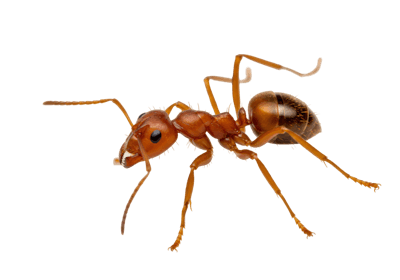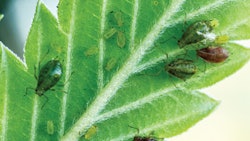
If there’s any problematic pest Allison Justice, Ph.D., truly despises, it’s the red imported fire ant (solenopsis invicta).
These ants have been the bane of the growing season for the founder and CEO of the Cannabis Research Coalition, which conducts horticultural research, and The Hemp Mine, a hemp CBD business. On her half-acre plot of outdoor hemp plants near Clemson University in South Carolina, these pests have long been concerning, building massive mounds near the roots and causing major plant damage.
But the recent planting cycle has been worse than any other year. “This past year, the damage has been mind-blowing,” Justice tells Cannabis Business Times in an interview. “It went from a 1-percent loss due to fire ants in previous years to around 35 percent this year.”
Fortunately, Justice has found a solution to combat these ants who rampage through her plants.
‘They have surpassed caterpillars as my nemesis’
Some in the cannabis sector learned about Justice’s challenge in early September when she posted on LinkedIn two videos showing the plant damage and the ants scrambling around and onto the stems. She also zoomed in to reveal the deep holes the ants bored into the soil near the plant roots.
She wrote in her first post, “This isn’t a pest that you can beat by once-a-week sprays. … There are millions underground and above ground with nests near and far. They have surpassed caterpillars as my nemesis.”
As to why the ants have been more active this year compared to around eight years ago when they first started appearing on the plot, Justice isn’t exactly certain but points to the weather as a possible instigator.
“We had a very dry year, so the ants might be looking for moisture,” she says. Another potential cause could be due to how the entire pasture was tilled this year as opposed to just the rows they were planting in. “If I had to guess, that causes more vegetation to grow, then there’s natural grass that’s there for the ants to feed on, and when they want to seek water or something to snack on during those dry months, they have those [hemp] plants,” she says.
This year, Justice says the tunneling around the stems were so deep she thought mice were the culprit. “You could flick the plant a little bit, and you see ants spilling out of the hole they made in the stem,” she says.
A chemical approach to her pesky problem
After looking into the red imported fire ants and what others had been doing to fight them, Justice found a solution. She says it’s critical to identify the feeding behavior of the specific insect as buying a generic ant bait is likely not going to work.
“Get that specific compound out before you plant, too,” she advises, “and the one that worked for me is an insect growth regulator called S-methoprene.” (The specific product she uses is Extinguish Professional Fire Ant Bait.)
She goes on to say, “This compound messes with the development of the juvenile, so if one of the ants takes it back to the colony, the juveniles eat it, and then they’re not able to reach the reproductive stage, so it eventually just kills the whole colony.”
Justice is confident she’s stemmed the ant tide—for now. “I feel like I'm prepared. I've got a product that works. When I went out into the field recently, around four weeks after applying S-methoprene, the damage has stopped, the nesting has stopped, and I think we’ll make it to harvest.”
She adds that this compound isn’t allowed in every state, so growers should check their state list of approved pesticides. “The other technical part is understanding state permissions on a bait, which is inside a container which the ants go inside, versus broadcasting,” she says. Justice adds that she puts the granules in a plastic container with holes rather than broadcasting over the field.
Lastly, she wants other growers to be proactive before the damage becomes too severe. Justice says, “Look for mounds near your plants that can be a couple inches tall or maybe even as high as two-and-a-half feet tall, which I’ve seen. And then read all you can about the biology about the insect you’re dealing with. That’s truly one of the smartest things you can do.”
David Silverberg is a freelance journalist who writes about cannabis and the cannabis industry.



























